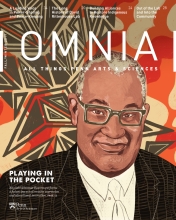Uncovering the Roots of Discrimination Toward Immigrants
Nicholas Sambanis of Political Science analyzes relationships between religion, ethnicity, and social norms.

Worldwide, immigration is a source of social and political conflict. What is at the root of conflict between immigrants and native populations?
“Opposition toward immigration can be due to economic reasons because of competition for jobs, or due to the perceived cultural threat that immigrants pose to their host country by challenging dominant norms and changing the national identity,” explains Nicholas Sambanis, Presidential Distinguished Professor of Political Science.
Based on his research, Sambanis, the founder and Director of the Penn Identity and Conflict (PIC) Lab, finds arguments centered on cultural threat more convincing than economic explanations of opposition to immigration, especially in Europe. He collaborated with University of Pittsburgh assistant professor Danny Choi, a former PIC Lab postdoc, and Mathias Poertner, a PIC Lab fellow and postdoc at the University of California, Berkeley, to design an experiment to test if social norm adherence—in this case, an aversion to littering—could reduce discrimination against immigrants in Germany. Their research was recently published in Proceedings of the National Academy of Sciences.
Samabnis and his collaborators staged the following scenario: A native German man would litter in a public space and either be admonished or ignored by a nearby woman. Admonishing the litterer and encouraging him to clean up is an adherence to a German social norm. Then, the same woman would drop a bag of groceries. The woman’s identity was a variable: In some versions, she was a native German, in others a Muslim immigrant wearing a hijab. Observing researchers recorded whether the bystanders who had witnessed this entire interaction helped the woman pick up her groceries.
Teams of research assistants ran this experiment more than 1,600 times in 30 cities across Germany, with more than 7,000 bystanders. Researchers measured whether good citizenship—enforcing anti-littering norms—generated more help from bystanders, eliminating any bias against immigrants.
“We found that bias toward Muslims is too pronounced and is not overcome by good citizenship; immigrant women who wore a hijab always received less assistance relative to German women, even when they followed the rules,” Sambanis says. “But we also found that good citizenship has some benefit, as the degree of discrimination toward Muslims goes down if they signal that they care about the host society. And ethnic or racial differences alone do not cause discrimination in our setup. Nor is religious assimilation—wearing a cross rather than a hijab—necessary to be treated with civility.”
Researchers found the rates of assistance offered to a Muslim who enforced social norms by scolding the litterer were equivalent to those for a German who did not enforce the norm.
“The reason to run such an experiment focusing on everyday interactions is that it gives you a sense of the accumulated impact of discrimination in shaping perceptions of identity and belonging,” Sambanis says. “Getting help to pick up something you drop on the floor seems like a small thing. But these small things—and small slights—add up to form lasting impressions of how others perceive you and, in turn, can inform the immigrants’ own attitudes and behavior toward the host society.”
This collaborative effort will become a book on how conflict between immigrants and native populations can be managed and whether norms can form the basis for a reduction in discrimination. The German experiments will be expanded next year and applied to a different social context in Greece.
“A lot of the work that I do shows that ethnic conflict is not inevitable,” says Sambanis. “The key is to understand the conditions that make ethnic differences salient and then find ways to defuse or manage conflict.”




